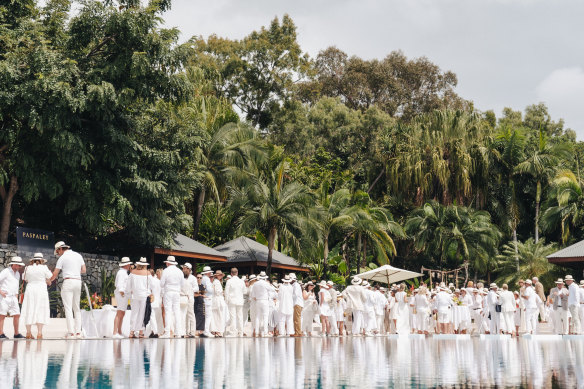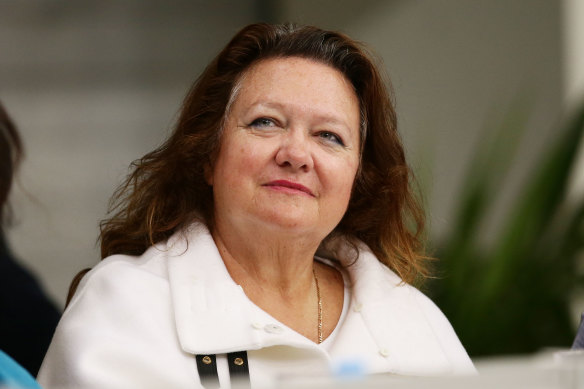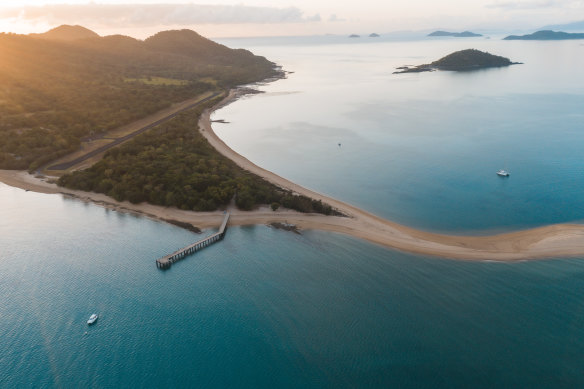This was published 1 year ago
Opinion
Island trading: Why billionaires love to own a sand-fringed palm tree
Elizabeth Knight
Business columnistTropical islands are the ultimate vanity purchase for billionaires – after the shopping list of monster yacht, private jet, and numerous homes and vineyards have been ticked.
But the mooted $1 billion sale of the commercial jewel in the crown, the billionaire legendary wine-making Oatley family’s Hamilton Island, is about to test the appetite for investment in island tourism.

Got a lazy $1 billion? Hamilton Island is up for sale.
It is not surprising that the Forrest family, the Cannon-Brookes, the Oatleys, Richard Branson (he has three islands), Justin Hemmes and ComputerShare co-founder Chris Morris are among those who own, or have invested in, these palm-studded ocean oasis trophies.
Mining billionaire Gina Rinehart came close a few years ago to buying Great Keppel, but decided against “getting wrecked”, and Clive Palmer is said to be a regular island tyre-kicker.
In recent years, the going price of an island, with hotel facilities, has ranged from $9 million to $50 million.
For some buyers it is little more than a private retreat, a place for family and friend gatherings. For others, it’s an opportunity to preserve the environment.
And it is no coincidence that buying an island is the domain of the super-rich given the difficulties in making them a commercial success.

Hamilton Island is larger and has more infrastructure facilities than other Queensland islands.
Getting permits to build are notoriously difficult, the costs of running an island resort are way higher than a mainland equivalent and, other than Hamilton, none are accessible by large commercial flights.
A parliamentary inquiry recently admitted that the tenure arrangements on Great Barrier Reef islands were complex and the development application processes onerous. Only a few were on freehold. Marine infrastructure, such as jetties, is limited – or missing.
And building costs are said to be three times higher than costs on the mainland.
‘It is no coincidence that buying an island is the domain of the super-rich given the difficulties in making them a commercial success.’
Owners of Australian island resorts are also having to deal with more than a decade of competition from the likes of Bali, which offers strong value for money, especially for the young and value-conscious.
But Hamilton stands apart from the others in size and facilities, having been developed in the 1970s and 1980s by white-shoe entrepreneurs who were permitted to build the likes of a harbour and airport that would not pass today’s environmental restrictions.

Mining billionaire Gina Rinehart came close to owning Great Keppel Island.Credit: Getty
For the Oatley family, Hamilton has been way more than a vanity project. The island is more an integrated resort package catering to high-end and budget accommodation that has been developed over 20 years of ownership. The family reportedly spends $16 million a year on running Hamilton Island.
The family is said to have spent about $450 million on Hamilton – more than double the acquisition price.
So, larger scale commercial buyers with established size and expertise in hotels or tourism are more likely candidates to take a closer look at Hamilton.

Mike Cannon-Brookes and former wife Annie bought Dunk Island pledging to preserve its natural environment.
Smaller island resorts, with limited accommodation, are said to be sub-economic unless they are pitched at the very high end of the market and cater to the wealthy tourist prepared to pay thousands of dollars a night per room.
And the emergence of the low-impact environmental retreats is another tourism growth market that these island resorts are tapping.
The renewed interest from Australian billionaires is said to have been prompted by the COVID-19 pandemic, with international border closures forcing even the wealthy to reassess tourism within Australia.
And there have been plenty of islands to choose from. Thanks to weather events including cyclones, there are islands, such as South Molle, sitting empty and waiting for investment.
No wonder it is the cash-heavy billionaires that dominate the list of would-be buyers.
The Business Briefing newsletter delivers major stories, exclusive coverage and expert opinion. Sign up to get it every weekday morning.